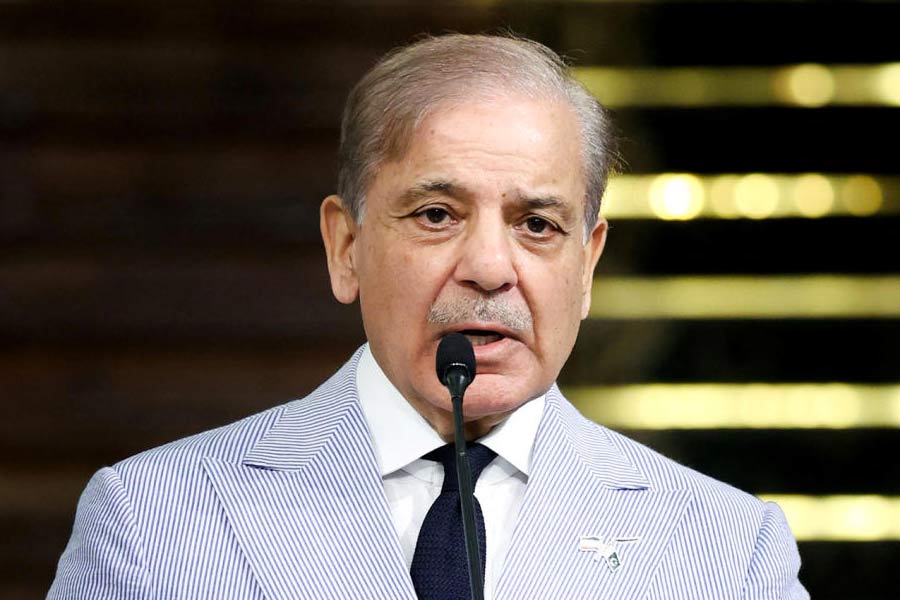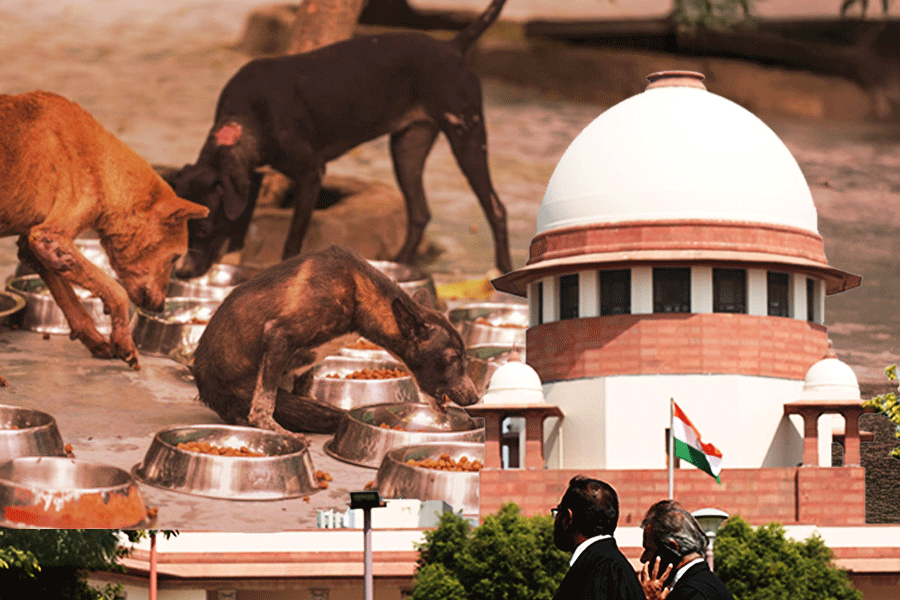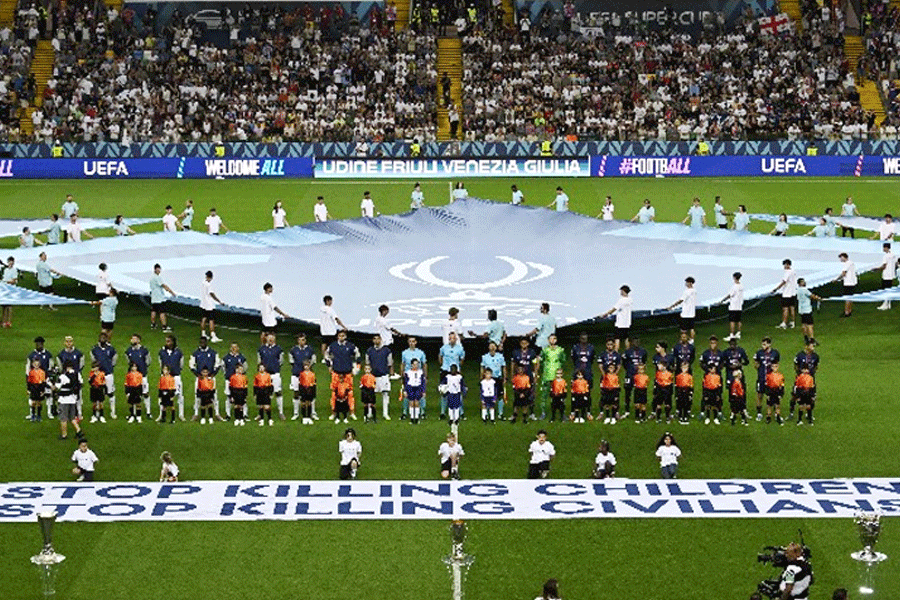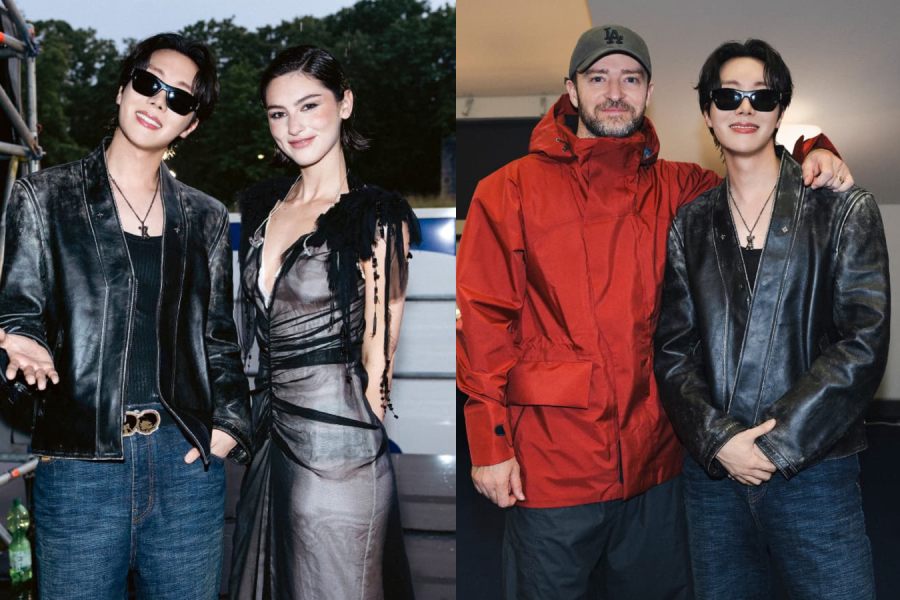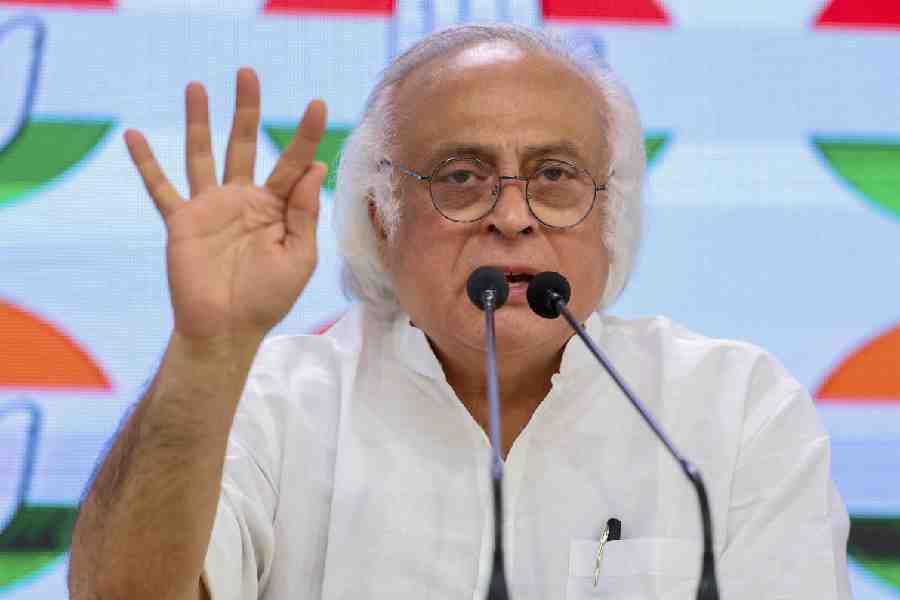 |
 |
 |
| WAY TO GO: The younger fashion divas, the likes of Shantanu Goenka and Agnimitra Paul, are coming into their own |
Calcutta fashion diva Kiran Uttam Ghosh is all tensed up. She is poised to launch a pr?t line in London in a few weeks time. If that clicks, it could take her career to new heights. “The venture is sponsored by an international company and there is a possibility that they might buy my label out. If the collection ? targeted at the Western silhouette ? is a success after its first showing and doesn’t need changes, it will hit the European market,” gushes Ghosh, who has just returned from Delhi where she participated in the Bridal Asia 2005 show. The international platform means that Ghosh’s label will be competing with the likes of the much-acclaimed Armani and Versace.
Ghosh isn’t the only Calcutta designer who is making waves. Anamika Khanna, who won the MTV Youth Icon award as the Breakthrough Designer of the Year, has just had a successful showing at the London Fashion Week, following which she bagged an exclusive contract with Harrod’s. Her new international label Ana Mika Boho is all set to make its debut in the UK. Sharbari Datta ? who set a trend for the metrosexual man with her chic dhotis and richly embroidered kurtas ? was felicitated last year by New York mayor Michael R. Bloomberg for her “exemplary service” to her community “through unique personal achievement”.
The accomplishments of these designers is merely reflective of a phenomenon that has made people sit up and take note ? this eastern metropolis is slowly becoming a fashion hub. Mumbai, which once monopolised fashion trends, has some stiff competition. And it isn’t just the well-known fashion divas who are changing the contours of the fashion industry.
The younger brigade ? with Sabyasachi Mukherjee leading and the likes of Agnimitra Paul, Snehashish Bhattacharya and Shantanu Goenka following ? is also coming into its own. Just as Sushmita Sen followed by Bipasha Basu and Koena Mitra imparted a glamour quotient to the face of Bengal beauty, “people started connecting fashion with the city with the advent of Sabyasachi Mukherjee,” says Anamika Khanna.
Known for his zeal to experiment, Mukherjee has had many accolades coming his way ever since he graduated with flying colours from the National Institute of Fashion Technology (NIFT), Calcutta in 1999. His designing philosophy ? “personalised imperfection of the human hand” ? has paid off in more ways than one. He was one of the only two Asians to be invited to the Milan Fashion Week last year. In 2003, he bagged an award at the Mercedes New Asia Fashion Week in Singapore. Back home, it was he who designed costumes for Sanjay Leela Bhansali’s film Black.
Agnimitra Paul, a product of BILAMS, another premier design institute in Calcutta, got her first break by designing costumes for Esha Deol in her debut movie Koi Mere Dil Se Poochhe, a Boney Kapoor production. Soon after, her Igna creations found a ready market. Ever since she has been designing garments for various celebrity clients including actresses Sridevi, Hema Malini, Koel Mullick, Raima and Riya Sen.
Shantanu Goenka, another NIFTian, has carved a niche for himself, having launched his own pr?t and diffusion lines. Indian trousseau and bridal wear are his forte. A Swarovski component is a necessary part of his outfits and not without reason. He is the only designer in Calcutta to have signed a quality-branding contract with the prestigious company.
Snehashis Bhattacharya’s success story is somewhat different. A self-taught designer with a ‘regular’ education that ended in an MBA and work experience in the information technology industry, Bhattacharya eventually gave in to his calling ? designing clothes ? and began to retail under his label Darzee. He got a break when filmmaker Rituparno Ghosh signed him on as a costume designer for his film Utsav. Recently he designed the men’s costumes for Vidhu Vinod Chopra’s Parineeta.
Evidently, Calcutta’s fashion divas ? young and old alike ? are riding a wave of success and the fashion industry in the state is finally blossoming. Industry insiders claim that Calcutta has a huge market for fashion and that wholesalers, buyers and retailers have gradually begun to tap it. The fashion business easily clocks up an annual turnover of Rs 100 crores, if not more, especially with the increase in the number of shopping malls, retail outlets and boutiques. Thanks to such designers, Calcutta has, over the last five years or so, elbowed its way on to the national fashion industry map.
“When I had started out eight years ago, Calcutta designers were looked down upon as crappy,” says Khanna. Not anymore. In fact today Calcutta designers set trends, points out Goenka. “Earlier it was always Mumbai or Delhi which started a trend and Calcutta caught on much later. But now often, it’s the other way round.” He is perhaps right. Zardozi work in short kurtas and kurtis which went on to become a rage was first introduced by designers in Calcutta. Floral prints on casual beachwear also took off from here.
Calcutta’s fashion designers, it seems, have imparted a new contemporary vision to the design world. “The north and west seem to have acquired a jaded feel, so people are looking towards the east for more beautiful, meaningful apparel,” explains Ghosh, adding that the piece de resistance is the exquisite craftsmanship of Bengal. “Master spinners, weavers, knitters, dyers ? they all have their roots in Bengal. So you could call it an advantage of genetics,” she notes.
The success of the designers has also, to an extent, rubbed off on craftsmen. Their lot seems to have improved with the fashion boom, Ghosh contends. “Rural areas such as Panchla, Ranihati, and the Howrah district in particular have excellent craftsmen. And the more enterprising of the lot have lovely marbled houses and cars too.”
The development, however, has been gradual, points out Apratim Ghoshal, CEO of the fashion and model management portal, kolkatamodels.com, “and it is primarily because the talent the city nurtures is now being showcased professionally and the brand-building exercise is on in full swing”.
|
The boom has spawned several other businesses. Choreography, backstage production, fashion photography, videography, modelling and fashion event-management offer lucrative opportunities. Mukherjee, all set to participate in the San Francisco Fashion Week that starts on October 20 in California, reasons, “Local heroes always inspire people to follow in their footsteps.”
So it’s become fashionable to be in the business of fashion. Where there were once hardly a handful of exclusive boutiques in the city, today they are sprouting like mushrooms. Ogaan, Take ’N’ Talk and Monapali have competition from boutiques with unimaginative names such as Sharmila’s Boutique and Orange Boutique.
“When we were young we had to make an extra effort to spell the word ‘boutique’. Today, everyone is into buying dresses from boutiques, which is a word that’s part of the common vocabulary,” says Datta.
But there are institutes that emphasise quality while honing talent. The NIFT, Calcutta ? a “major motivator” as Mukherjee puts it ? is a case in point. Now running into its tenth year, students are full of praise for the institute. “We have an excellent faculty and, more importantly, a job is guaranteed at the end of the four-year course,” says a second-year fashion designing student.
In fact, the huge demand for NIFT students has resulted in a disproportionate demand-supply ratio. “The other day an exporter from abroad wanted five NIFT students to work for him, but I couldn’t be of help because most of the students who had graduated had already found good jobs,” says B. Banerjee, associate professor of NIFT, who has been associated with the institute since its inception. “Today we have over 700 students ? we had started off with only 60 ? and some of them come from rural areas. This shows that a fashion consciousness is permeating to all levels of socio-economic strata,” he says.
Even private institutes such as Samrat’s Modelling and Performing Arts Institute are making the most of the fashion boom. The institute has some 2,000 students ? up from the 500 over seven years ago. Explains Mukherjee, “Earlier, students used to be secretive about their aspirations. Today, they are enthusiastic, uninhibited and proud of what they are doing.” Adds Sanchita Kushari Bose, whose event management company The Dream Merchants monopolises both ramp and photographic modelling in Calcutta. “Even seven years ago, there were hardly any models. Today, the company’s database includes 7,000 names.”
And with this awareness, the number of prestigious fashion shows in the city is also going up slowly but steadily. Blender’s Pride sponsored a fashion show in the city recently. The Royal Calcutta Turf Club holds fashion shows whenever a big event such as the Derby is on.
With competent jockeys like the city’s fashion divas holding the reins, it looks like dark horse Calcutta will soon gallop ahead of the other metros in the fashion race.







